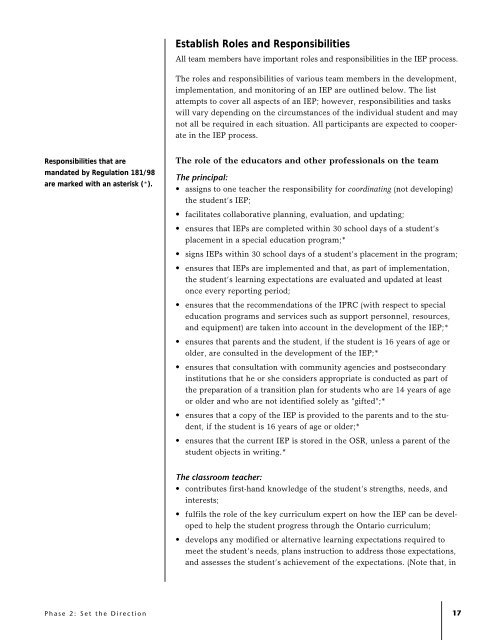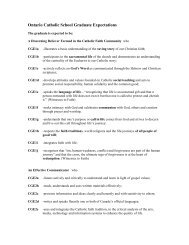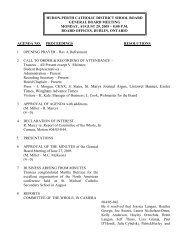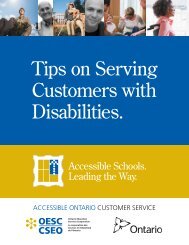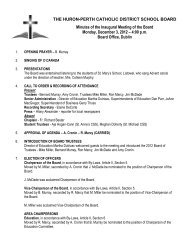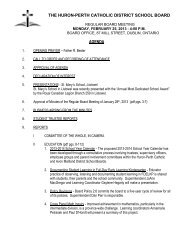The Individual Education Plan (IEP) - A Resource Guide, 2004
The Individual Education Plan (IEP) - A Resource Guide, 2004
The Individual Education Plan (IEP) - A Resource Guide, 2004
You also want an ePaper? Increase the reach of your titles
YUMPU automatically turns print PDFs into web optimized ePapers that Google loves.
Establish Roles and Responsibilities<br />
All team members have important roles and responsibilities in the <strong>IEP</strong> process.<br />
<strong>The</strong> roles and responsibilities of various team members in the development,<br />
implementation, and monitoring of an <strong>IEP</strong> are outlined below. <strong>The</strong> list<br />
attempts to cover all aspects of an <strong>IEP</strong>; however, responsibilities and tasks<br />
will vary depending on the circumstances of the individual student and may<br />
not all be required in each situation. All participants are expected to cooperate<br />
in the <strong>IEP</strong> process.<br />
Responsibilities that are<br />
mandated by Regulation 181/98<br />
are marked with an asterisk (*).<br />
<strong>The</strong> role of the educators and other professionals on the team<br />
<strong>The</strong> principal:<br />
• assigns to one teacher the responsibility for coordinating (not developing)<br />
the student’s <strong>IEP</strong>;<br />
• facilitates collaborative planning, evaluation, and updating;<br />
• ensures that <strong>IEP</strong>s are completed within 30 school days of a student’s<br />
placement in a special education program;*<br />
• signs <strong>IEP</strong>s within 30 school days of a student’s placement in the program;<br />
• ensures that <strong>IEP</strong>s are implemented and that, as part of implementation,<br />
the student’s learning expectations are evaluated and updated at least<br />
once every reporting period;<br />
• ensures that the recommendations of the IPRC (with respect to special<br />
education programs and services such as support personnel, resources,<br />
and equipment) are taken into account in the development of the <strong>IEP</strong>;*<br />
• ensures that parents and the student, if the student is 16 years of age or<br />
older, are consulted in the development of the <strong>IEP</strong>;*<br />
• ensures that consultation with community agencies and postsecondary<br />
institutions that he or she considers appropriate is conducted as part of<br />
the preparation of a transition plan for students who are 14 years of age<br />
or older and who are not identified solely as “gifted”;*<br />
• ensures that a copy of the <strong>IEP</strong> is provided to the parents and to the student,<br />
if the student is 16 years of age or older;*<br />
• ensures that the current <strong>IEP</strong> is stored in the OSR, unless a parent of the<br />
student objects in writing.*<br />
<strong>The</strong> classroom teacher:<br />
• contributes first-hand knowledge of the student’s strengths, needs, and<br />
interests;<br />
• fulfils the role of the key curriculum expert on how the <strong>IEP</strong> can be developed<br />
to help the student progress through the Ontario curriculum;<br />
• develops any modified or alternative learning expectations required to<br />
meet the student’s needs, plans instruction to address those expectations,<br />
and assesses the student’s achievement of the expectations. (Note that, in<br />
Phase 2: Set the Direction<br />
17


